11 Best Things to Do in Osaka, Japan
If you’re planning a trip and searching for the best things to do in Osaka, you might expect a Tokyo-style experience. And I understand, they’re both major cities.
But let me stop you there. Osaka does things its own way. It’s just as sprawling, but the energy is different. More casual. More local. Far less obsessed with perfection.
The contrast hits fast. Dotonbori is loud and electric, neon everywhere, crowds buzzing, but walk a few blocks and everything shifts.
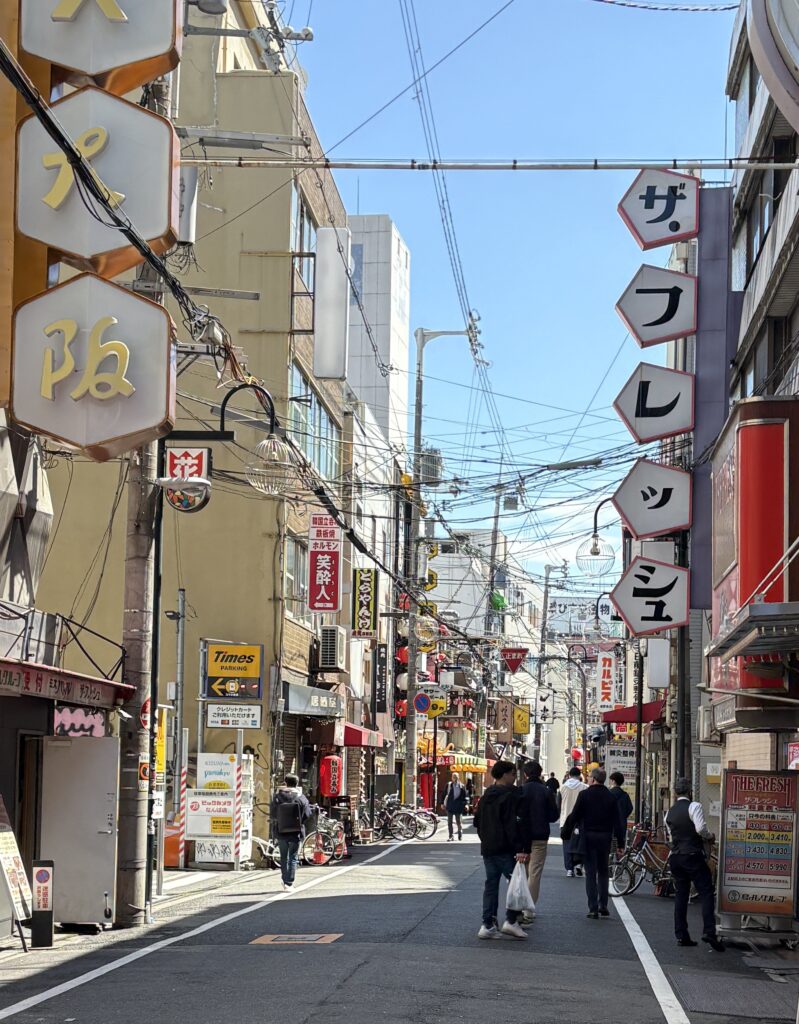
You’ll find peaceful side streets, cozy ramen shops, and locals just doing their thing. Osaka breathes easier, even with millions of people.
But what really seals it? The food. Osaka is the “Kitchen of Japan,” and that’s not just a tourism tagline, it’s the truth.
The street food is legendary. Even a casual meal feels like a special occasion. Takoyaki? Unmatched. Okonomiyaki? Sauce-drizzled comfort. Add sushi, wagyu, and a dozen more specialties, and yeah—the food here is just… speechless.
So if you’re a foodie or someone looking for a city that’s both vibrant and unpretentious, Osaka delivers. And this guide covers the absolute best things to do once you land.
Explore Dotonbori at Night
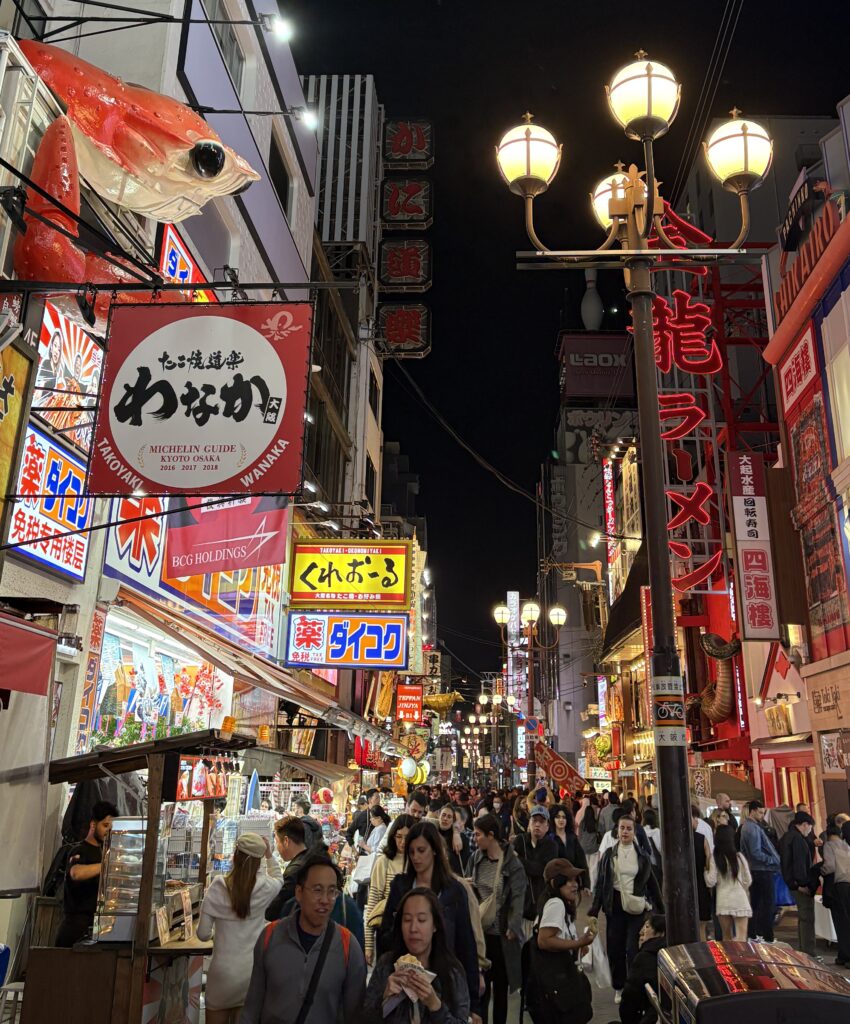
If there’s one place in Osaka that fully embraces chaos, neon, and non-stop energy, it’s Dotonbori. It’s the city’s poster child, loud, flashy, and unapologetically over the top.
But honestly? It works. The moment you step onto the Ebisu Bridge and see the glowing Glico sign reflecting off the canal, you’ll understand why this area draws people in night after night.
You’ll find yourself walking shoulder-to-shoulder with tourists, locals, and street performers. The smell of sizzling takoyaki fills the air, mixed with the occasional blast of J-pop from a nearby shop. It’s sensory overload in the best way possible.
What’s great about Dotonbori is that it doesn’t pretend to be anything other than what it is: pure Osaka energy.
It’s crowded, a little chaotic, and packed with flashy signs, themed restaurants, and photo ops on every corner. And yet, you won’t want to leave.
It shines late at night. The reflections in the canal, the lit-up billboards, the endless food options—it’s one of those places where time slips away.
Even if you hate crowds, consider giving Dotonbori a try after 9 PM. It thins out just enough to actually enjoy the madness without being swallowed by it.
Visit the Osaka Castle & Nishinomaru Garden
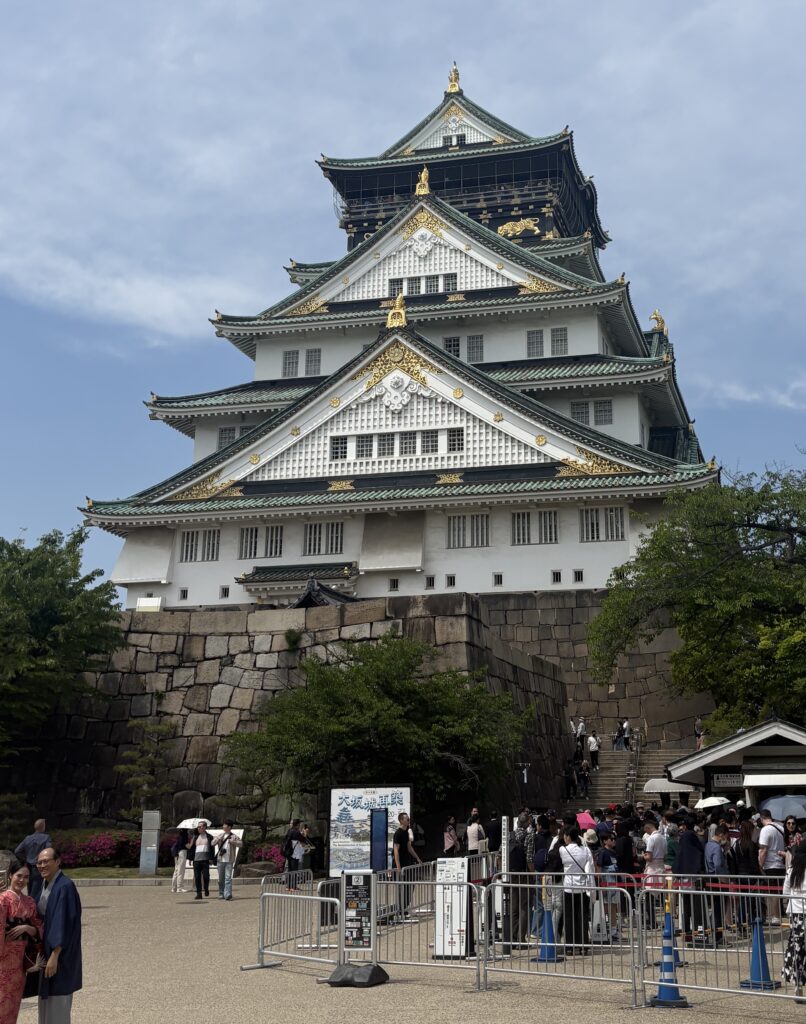
Osaka Castle might just be the prettiest contradiction in the city. Surrounded by moats and stone walls, it feels like a historic relic plucked from another era.
Then you look up and see the city’s skyline framing it, with office towers and modern buildings poking into view. That contrast is what makes this spot so cool.
The castle itself has been rebuilt several times due to war and fire, yet it still retains significant cultural significance.
You can walk up the steps or take an elevator to the top floor of the main keep, where you’ll get panoramic views of the city and the surrounding park. The inside is now a museum, which is… fine. But the real draw? The outside.
That’s where Nishinomaru Garden comes in. It’s a peaceful, beautifully landscaped green space located just west of the castle grounds.
With cherry trees, expansive lawns, and open skies, it’s one of the best places in Osaka to take a breather. During cherry blossom season, this park is easily one of the most photogenic spots in the city.
Whether you’re into history or want a break from the concrete, Osaka Castle and Nishinomaru Garden are worth your time, especially in the late afternoon when the golden hour light hits the walls just right.
Eat Your Way Through Kuromon Ichiba Market
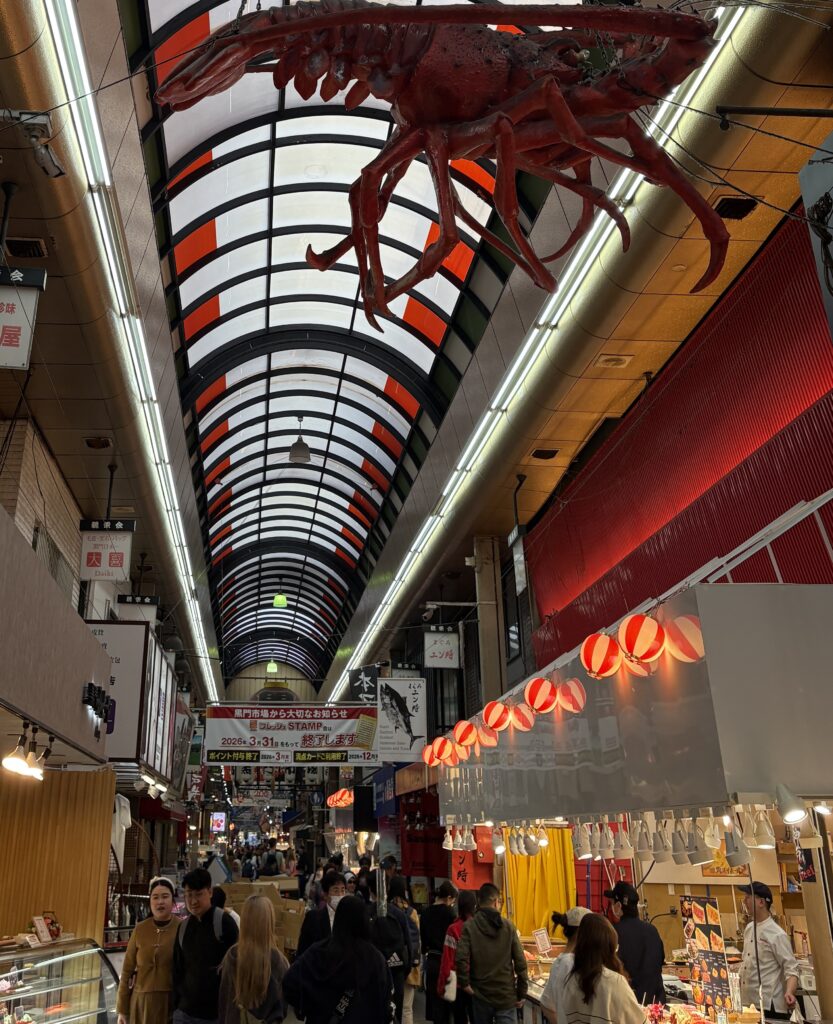
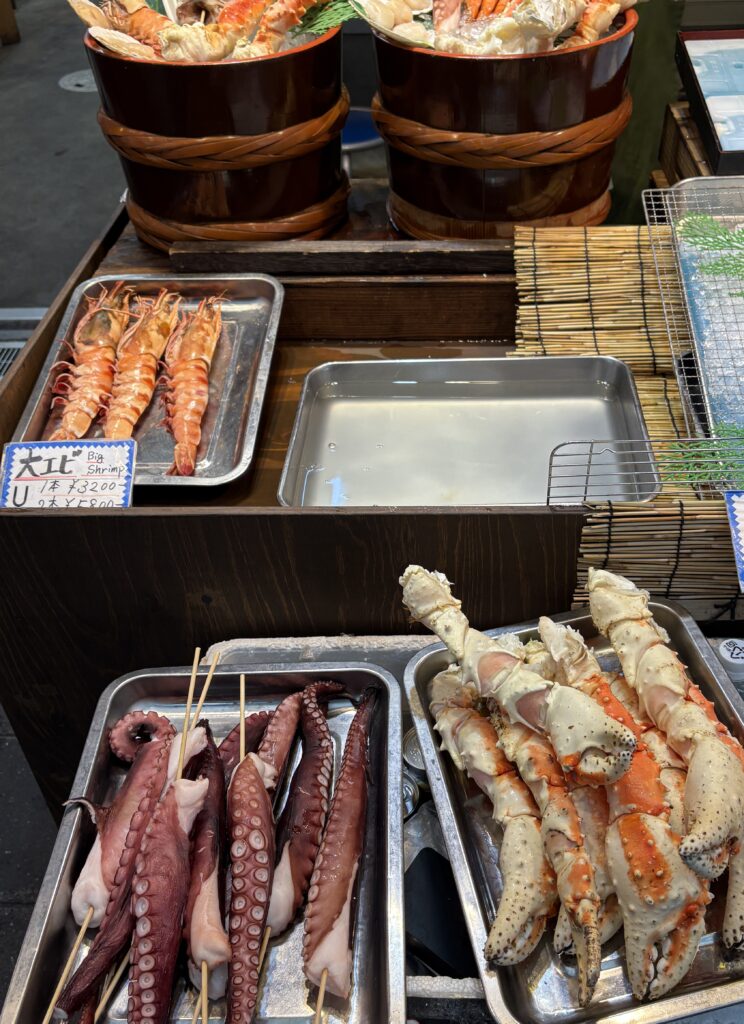
Nicknamed “Osaka’s Kitchen,” Kuromon Ichiba Market is where you go when you want to eat like you’ve got zero self-control and no regrets.
This place has been feeding Osaka for over a century, and it shows. Stall after stall lines the covered arcade, selling everything from perfectly marbled wagyu skewers to blowtorched scallops and piping-hot takoyaki.
It’s chaotic in the best way. You’ll be ducking between locals picking up dinner ingredients and travelers filming their snacks for social media.
But once you’ve got something in your hands—a seared wagyu cube, a grilled eel skewer, or a warm matcha mochi—you won’t care how many elbows you had to dodge to get there.
One of the market’s strengths is its approachability. You don’t need a reservation, a translation app, or even a full appetite. Just bring some yen and eat your way through.
Many stalls have prices marked, and a surprising number of vendors are happy to chat or recommend something if you linger with interest.
While it’s not as secret as it once was, Kuromon still feels local. It’s the kind of place where you’ll find old-school fishmongers next to flashy wagyu booths. Come hungry, leave full, and maybe bring an emergency stomach, it’s that good.
Shinsekai & Tsutenkaku Tower

Shinsekai is one of those places that feels stuck in time, in the best possible way. It’s retro, it’s a little gritty, and it’s exactly where you go when you want to experience a part of Osaka that hasn’t been polished up for tourists.
Think of it as Osaka’s vintage arcade neighborhood, with just the right amount of weird.
At the center of it all is Tsutenkaku Tower, Osaka’s answer to the Eiffel Tower if it were designed during a neon-lit pachinko dream.
You can go up to the top if you want a view, but honestly, the real fun is staying down below and wandering through the narrow alleys filled with bright signs, old diners, and kushikatsu shops.
Speaking of which, this is where you try kushikatsu, deep-fried skewers of meat, seafood, or veggies that you dip into communal sauce (but only once, don’t double-dip unless you want the stink eye).
There’s no shortage of places to try it, and the prices are pretty forgiving, even if you go all in. Shinsekai has a different pace. It’s not polished or curated. However, if you’re looking for an Osaka experience that feels raw, real, and just a little bit offbeat, this is it.
Universal Studios Japan & Nintendo World
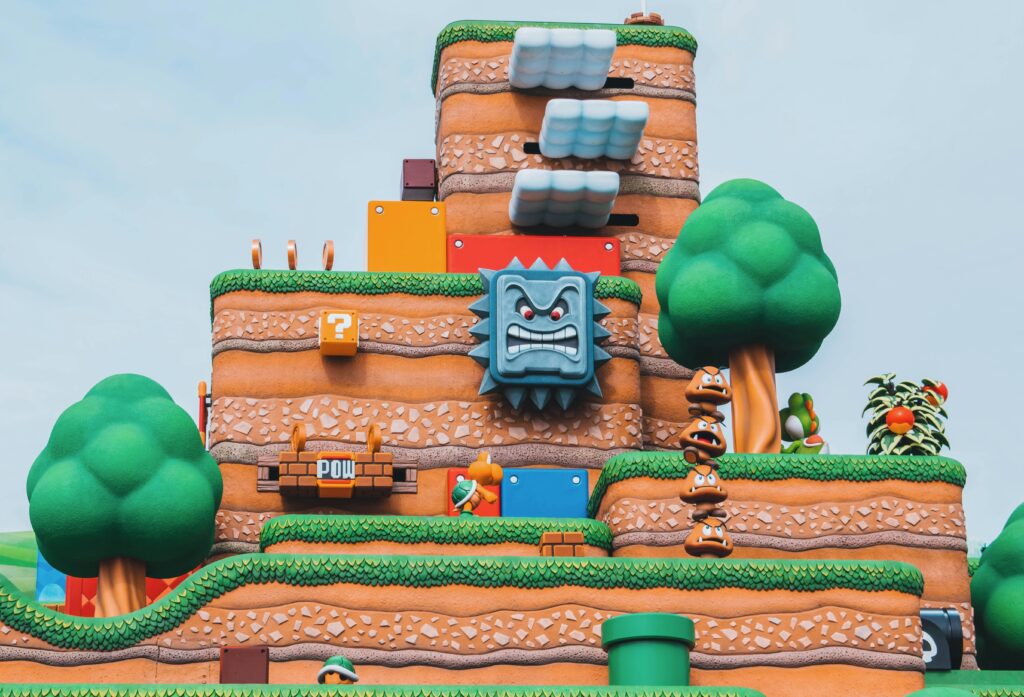
Let me just say this upfront: Universal Studios Japan is not a “maybe” destination. If you’ve got even a passing interest in theme parks, movies, or Mario Kart, it’s worth the full-day commitment.
This is not some tiny offshoot of the U.S. parks. It’s massive, and it goes into great detail, especially inside Super Nintendo World.
Now, here’s the thing. If you want to enter Nintendo World, you can’t just walk in. You need to reserve a timed entry ticket through the official app or buy an Express Pass that includes it.
Don’t show up without a plan, or you’ll end up staring at a giant green pipe from the outside like a sad Goomba.
Inside the park, you’ve got themed zones for Harry Potter, Jurassic Park, Minions, and more. The rides are solid, but it’s the immersive design that really makes them stand out. Wandering through the Mushroom Kingdom with giant spinning coins and animatronic Koopas? Yeah, it’s as fun as it sounds.
Pro Tip: Weekdays are significantly less crowded, and arriving early makes all the difference. If you’re traveling solo or in a small group, you can use the single rider line on many attractions and skip a ton of wait time.
Get a View From the Umeda Sky Building
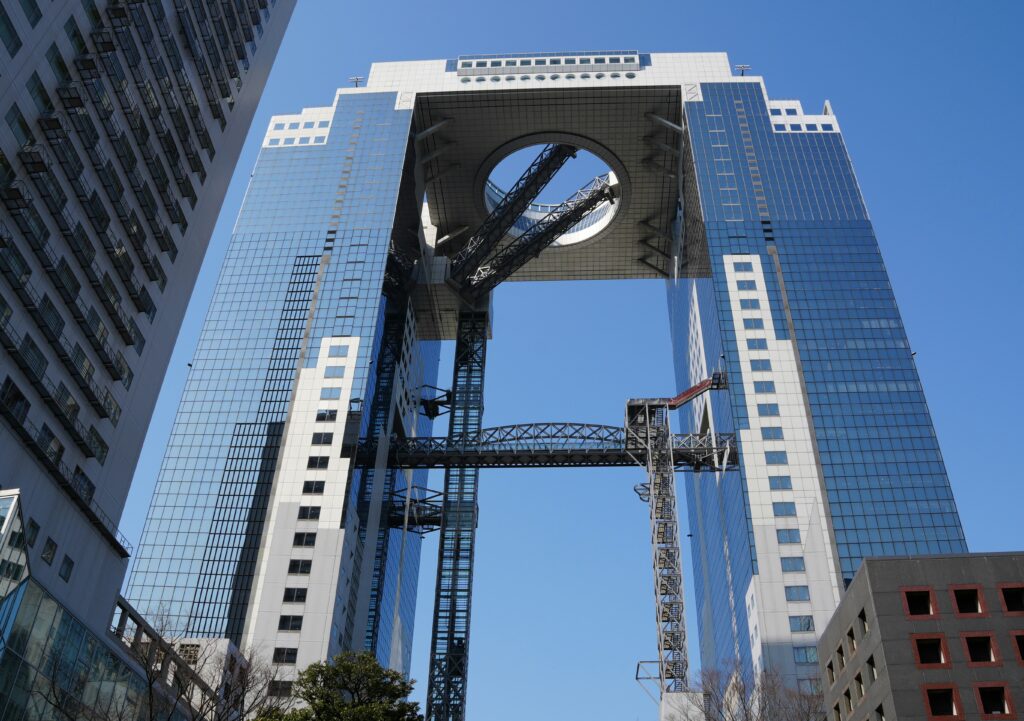
The Umeda Sky Building doesn’t just give you a view of Osaka, it makes a whole event out of it. This isn’t a standard observation deck in a generic tower. The building itself resembles a futuristic sci-fi portal, featuring two skyscrapers connected at the top by a circular “floating garden.”
You take a series of escalators that feel like they’re suspended in midair to reach the top, and once you’re there, the views are wide open in every direction.
On a clear day, you can see out toward Awaji Island and across the sprawl of Osaka. At night, the city comes alive, and the vibe takes on a more cinematic feel. If you’re into photography, this is one of the best spots for capturing the skyline in town.
It’s less crowded than other towers in Japan, which makes the experience even better. No elbows in your ribs, no ten-minute waits to get a photo. Just space, breeze, and a full view of the chaos below.
If you’re staying in Umeda or already passing through the area, the Sky Building is an easy detour. Pair it with a late lunch or early dinner nearby, then head up in time for golden hour; it’s easily one of Osaka’s most underrated city views.
TeamLab Botanical Garden
If you’ve heard of teamLab before, you probably think of their wild digital art museums in Tokyo.
But in Osaka, they’ve done something a little different, and honestly, it might be better. teamLab Botanical Garden is a nighttime-only installation inside Nagai Park, where nature meets tech in the most surreal way possible.
Once the sun sets, the entire garden comes alive with glowing orbs, interactive light patterns, and ambient soundscapes that shift in response to your movement.
It’s not just lights in trees either. This is full-on immersive art layered into a real botanical garden. The result is peaceful, weirdly emotional, and very Osaka.
What sets it apart is its remarkable quietness. Unlike the busier teamLab spots, this one is outdoors and spaced out, allowing for moments of stillness.
Walk slowly, touch the light, let the colors shift with your movements. It’s a break from the chaos of the city without feeling like you’ve left it.
Tickets need to be booked in advance, especially on weekends. You can easily pair this with dinner nearby, or use it as your low-key end to a packed Osaka day.
If you’re looking for something artsy without being pretentious, this is it. It’s not loud. It’s not trying too hard. It’s just cool and genuinely calming.
Hozenji Yokocho & Namba Yasaka Shrine
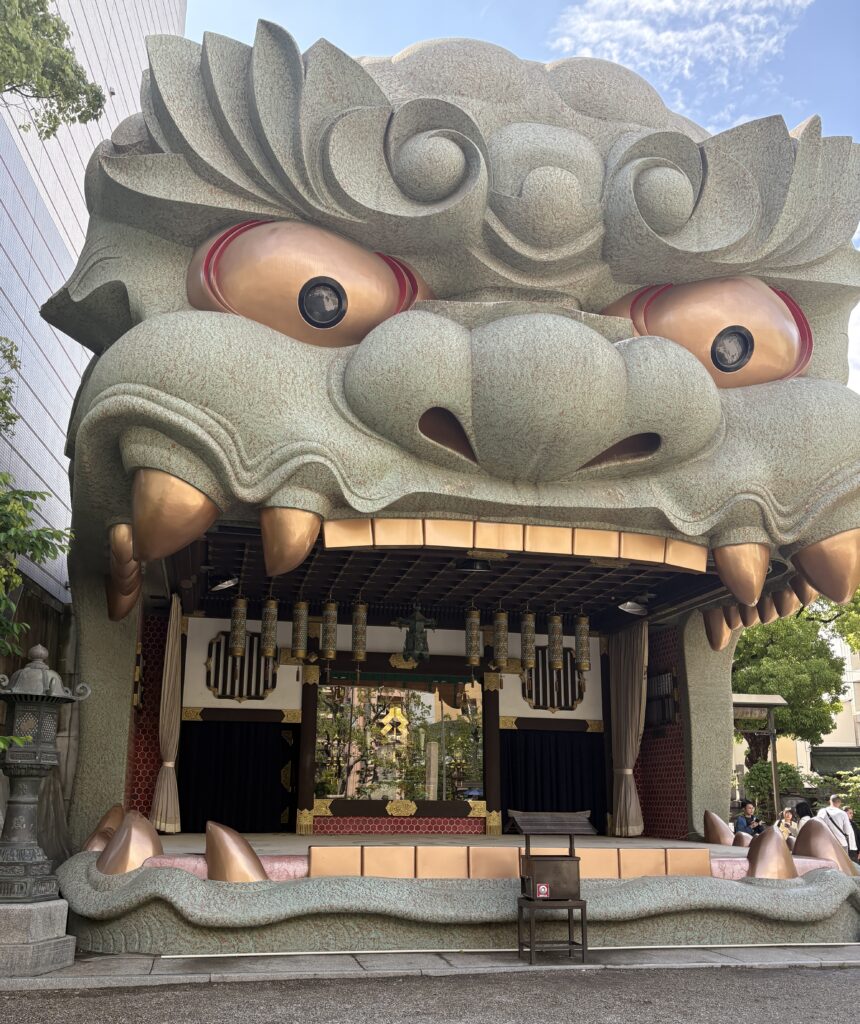
Most shrines in Japan are elegant, minimalist, and a bit reserved. Namba Yasaka Shrine is… not that.
Tucked behind some standard streets near Namba Station, this shrine features a massive lion’s head stage, towering, golden-eyed, open-mouthed, and massive. And if you weren’t expecting it, it’s kind of amazing.
The lion is called the “shishi” and is said to ward off evil spirits and bring good luck. But let’s be real, it also just looks epic. If you want a shrine photo that doesn’t look like every other tourist’s Instagram post from Kyoto, this is where to get it.
The shrine itself is small and quiet. Most tourists miss it entirely unless they’ve been told to look for it.
That’s what makes it even better. It feels like one of those “you’ve got to see it to believe it” kind of spots, and it only takes a few minutes to visit.
If you’re already exploring Namba or on your way to Dotonbori, swing by. It’s worth the short detour just for the absurd scale of that lion head alone. And yes, it’s free to enter.
Explore Amerikamura (American Village)
Amerikamura, or “Amemura” if you want to sound like you know what you’re talking about, is Osaka’s youth culture hub.
It’s part Harajuku, part thrift store jungle, and part “what exactly is going on here?”, which is exactly why it’s worth a visit.
This is the heart of street fashion, secondhand shops, art murals, and wildly creative storefronts. It’s not trying to be cute.
It’s gritty, a little loud, and feels like Osaka’s alternative scene smashed into a few blocks. You’ll see skaters, people filming TikTok videos in full cosplay, and teens walking around like they just walked off the set of a music video.
There’s also food, of course. Expect bubble tea, American-style burgers, weird fusion snacks, and some of the best crepes I’ve had in Japan. And yes, there’s a Statue of Liberty on top of a building for no reason at all. Just go with it.
If you want something different from the shrines and markets, Amerikamura gives you a hit of the city’s younger, wilder personality. Walk through during the day for shopping, or come in the evening when it feels more like a scene.
Sumiyoshi Taisha Shrine
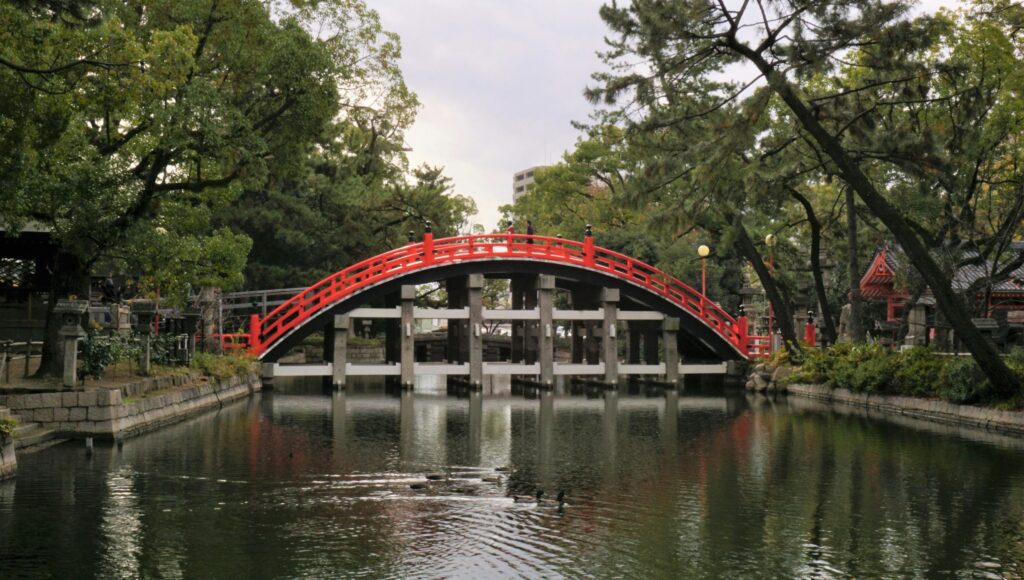
Osaka has no shortage of shrines, but Sumiyoshi Taisha feels like it exists in its own quiet universe.
It’s one of Japan’s oldest shrines, dating back over 1,800 years, and it doesn’t follow the architectural style you’ll see in places like Kyoto. The roofs are steeper, the shapes are different, and there’s an old-school simplicity that makes it stand out.
The real visual showstopper is the red Sorihashi Bridge that arches dramatically over a pond near the entrance. It’s the kind of spot that makes you stop mid-step and take a breath—or a photo. Both work.
The grounds are peaceful and spacious, and the whole place has this calm, unfussy atmosphere. Even on weekends, it doesn’t feel packed. You might see a few families, some locals coming to pray, and maybe a wedding if you’re lucky.
If you’re looking for a spiritual break from the flashier parts of Osaka, Sumiyoshi Taisha is worth the train ride.
It’s located a bit outside the city center, but you can get there in under 30 minutes from Namba using the Nankai Line.
No huge crowds, no admission fee, and a whole lot of history. Sometimes that’s exactly what you need between bowls of ramen.
Walk Tenjinbashisuji Shopping Street
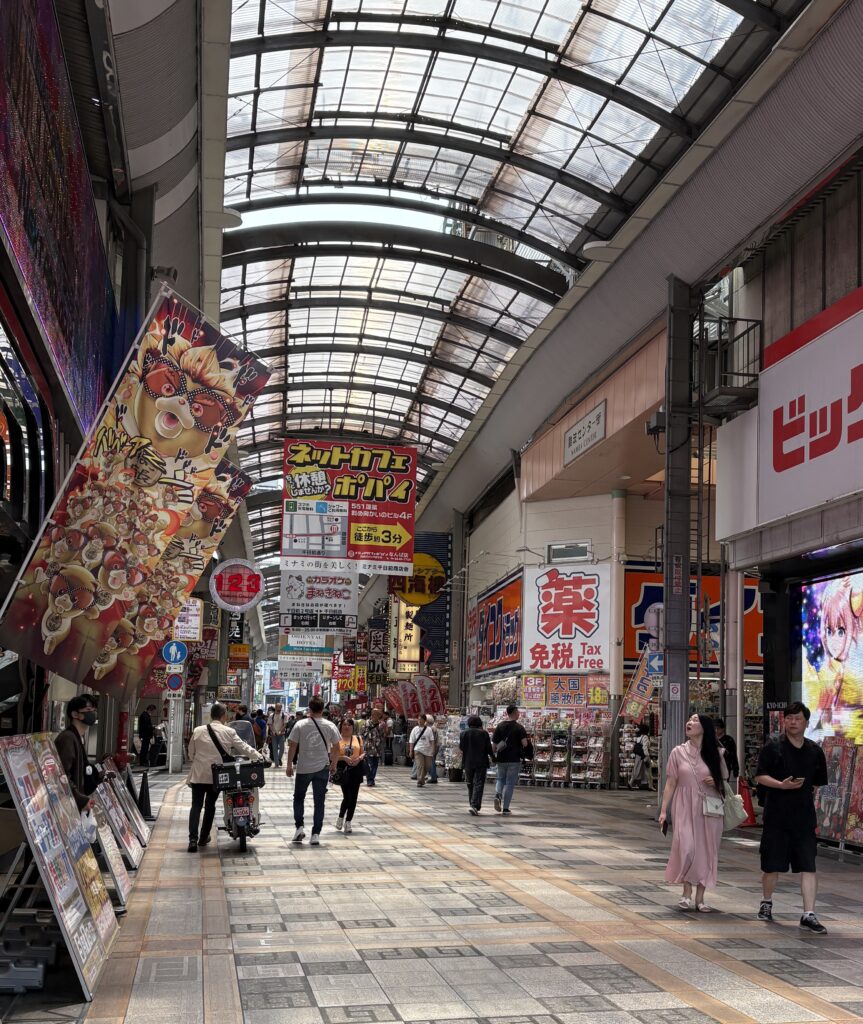
Most tourists never make it here, which is wild because Tenjinbashisuji Shopping Street is Japan’s longest covered shopping arcade.
It stretches over 2.5 kilometers and is packed with tiny restaurants, old-school candy shops, barbers, bookstores, and everything in between.
This is everyday Osaka. You won’t find luxury brands or curated souvenir stalls. What you will find are locals running errands, old men chatting outside ramen joints, and food that’s cheap, fast, and better than it needs to be.
It’s not flashy. It’s aggressively normal, and that’s the charm. You might come across a hole-in-the-wall curry shop that blows your mind, or a tempura place with five seats and no menu in English. That’s where the fun is.
The street is split into several sections, and you can hop in or out depending on how much walking you feel like doing.
If you’re into browsing, people-watching, or want a long stroll with snacks along the way, this spot delivers.
It’s not built for tourists, which is why it feels so authentic. And if you’re lucky, you’ll end up eating something you can’t quite name, but will remember the taste of for weeks.
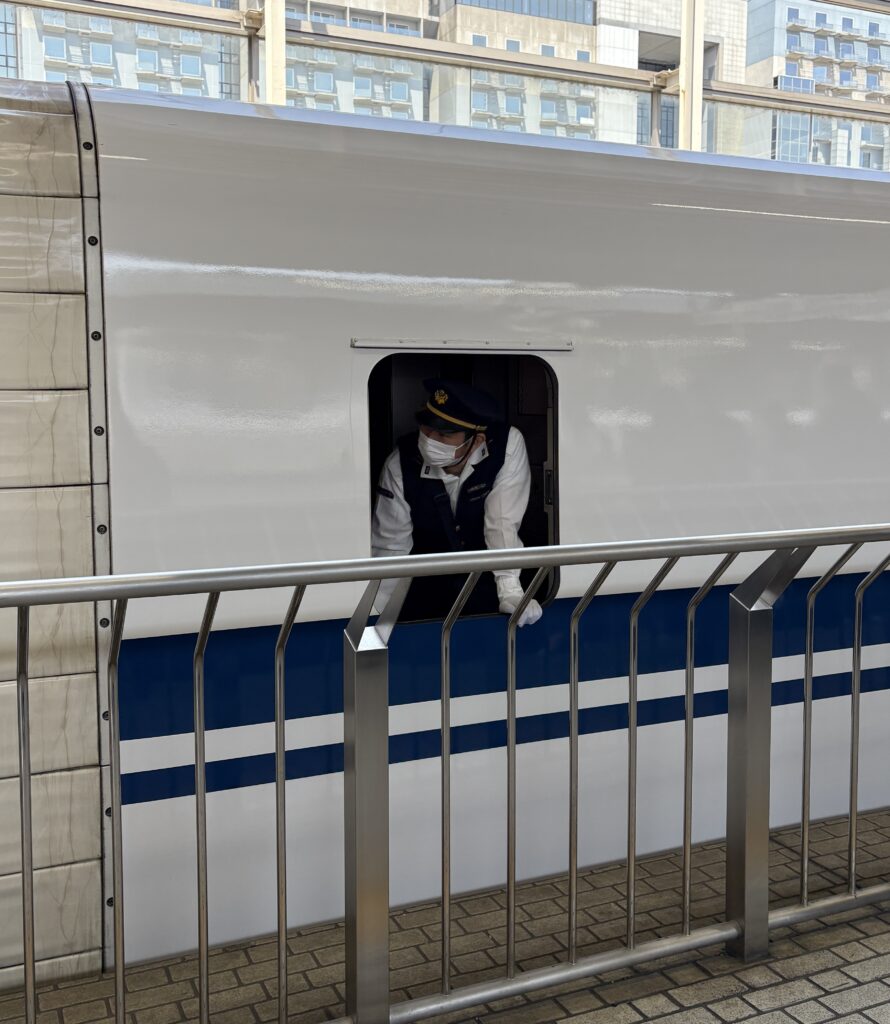
Getting Around Osaka
Osaka is big, but it’s also one of the easiest cities in Japan to navigate, even easier than Tokyo. Don’t worry, though; I think Tokyo is easy to navigate as well, but that’s just my opinion.
Whether you’re bouncing between neighborhoods or trying to get to Universal Studios without a meltdown, the transit here is efficient, affordable, and straightforward to navigate.
- Osaka Metro: This is your main way of getting around the city. It’s fast, clean, and hits all the major areas—Dotonbori, Umeda, Namba, you name it.
- IC Cards (ICOCA, Suica, Pasmo): Grab one and reload it as needed. Works on trains, subways, and even convenience store purchases. Absolute time-saver.
- JR Lines (Local Use): JR lines are fine for getting into Osaka or to places like Osaka Castle, but if you’re just exploring the city, the Metro is usually better.
- Don’t Bother With the JR Pass (Inside Osaka): Unless you’re doing long-distance travel across Japan, the JR Pass is overkill for Osaka. Save your money.
- Taxis & Ubers: Available, but pricey. Use them if you’re in a group or stranded late at night—not for everyday sightseeing.
- Airport Transfers: Kansai Airport to the city? Use the Nankai Line or Airport Limousine Bus, depending on where you’re staying. Easy and reliable.
Where I Ate in Osaka (And Would Happily Eat Again)
Look, I ate very well in Osaka. There’s no shortage of hyped-up food spots in this city, but these places actually lived up to the buzz, and in some cases, completely surprised me. In fact, for the food alone, Osaka is worth visiting, and these spots prove why.
If you’re hungry and don’t want to gamble on a random spot, these are the restaurants I tried myself and would absolutely go back to without hesitation.
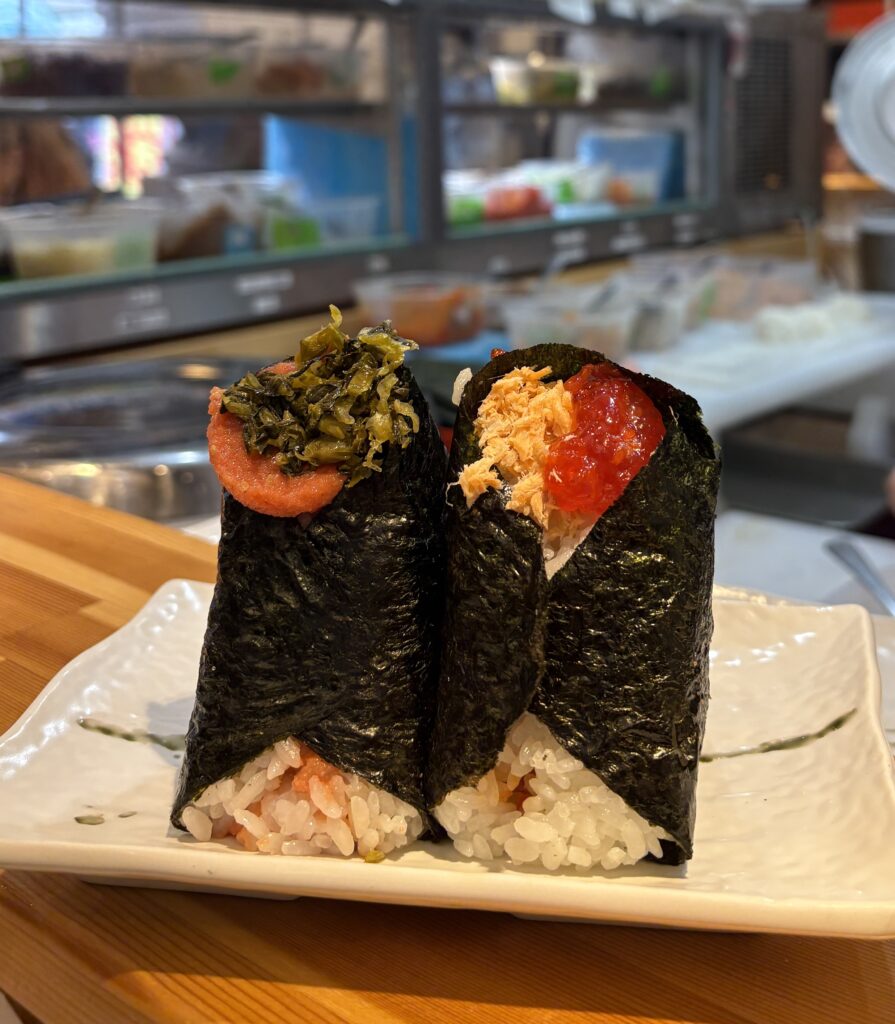
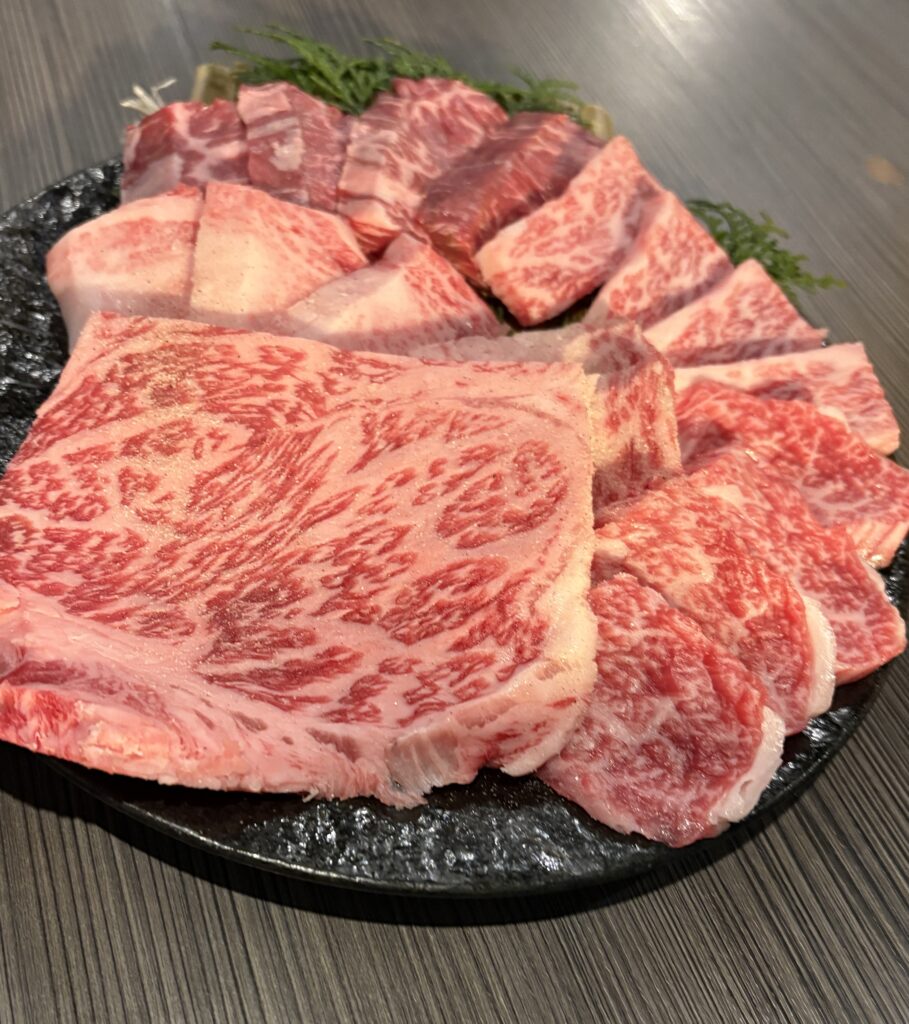
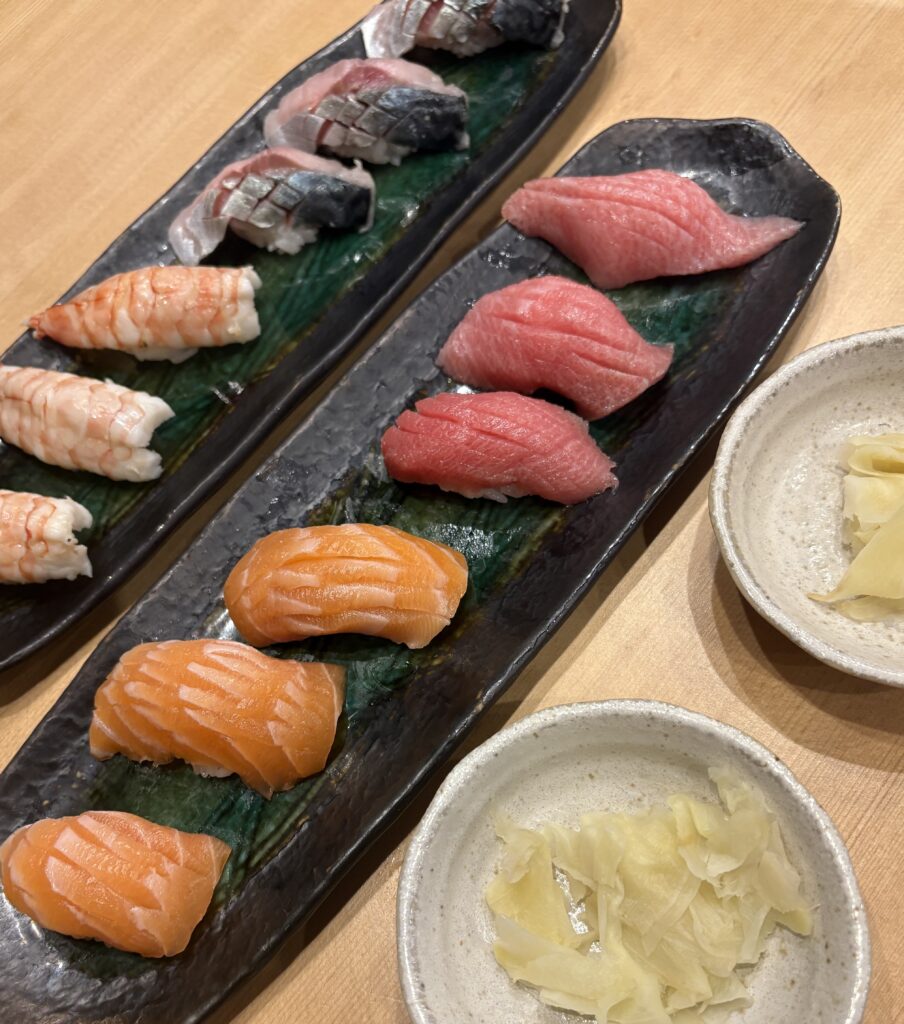
- Two Sam’s Up (Japanese Curry Restaurant): Easily the best Japanese curry I had in Japan. Rich, perfectly spiced, and comforting without being heavy. Nothing fancy—just a flawless plate of curry.
- Onigiri Gorichan: Legendary. Big, handmade onigiri rolled right in front of you. The salmon is non-negotiable. Expect a line and go early, it’s worth every minute.
- Izakaya Nonkiya: Relaxed vibe with an awesome mix of grilled dishes, sashimi, and small bites. Everything had solid flavor, and the menu variety made it easy to over-order.
- Yakiniku Rikimaru Sennichimae: Best all-you-can-eat wagyu I’ve had. High-quality cuts, butter-soft texture, and different buffet levels based on your mood (and wallet). Still dream about it.
- Kotesu Sennichimae: A kushikatsu playground—fried skewers done right. Shrimp, pork, cheese, veggies… all crispy, never greasy. Super casual, super satisfying.
- Sushi Hiro: An Understated sushi spot with standout uni and fatty tuna. No flash, just fresh fish and a mellow setting. One of those quiet hits you don’t forget.
- Matsuya (Udon Noodles): Bowls start around ¥300 and taste like they shouldn’t be that cheap. Fast, hot, and perfectly chewy. Feels like an old reliable local that never stopped loving.
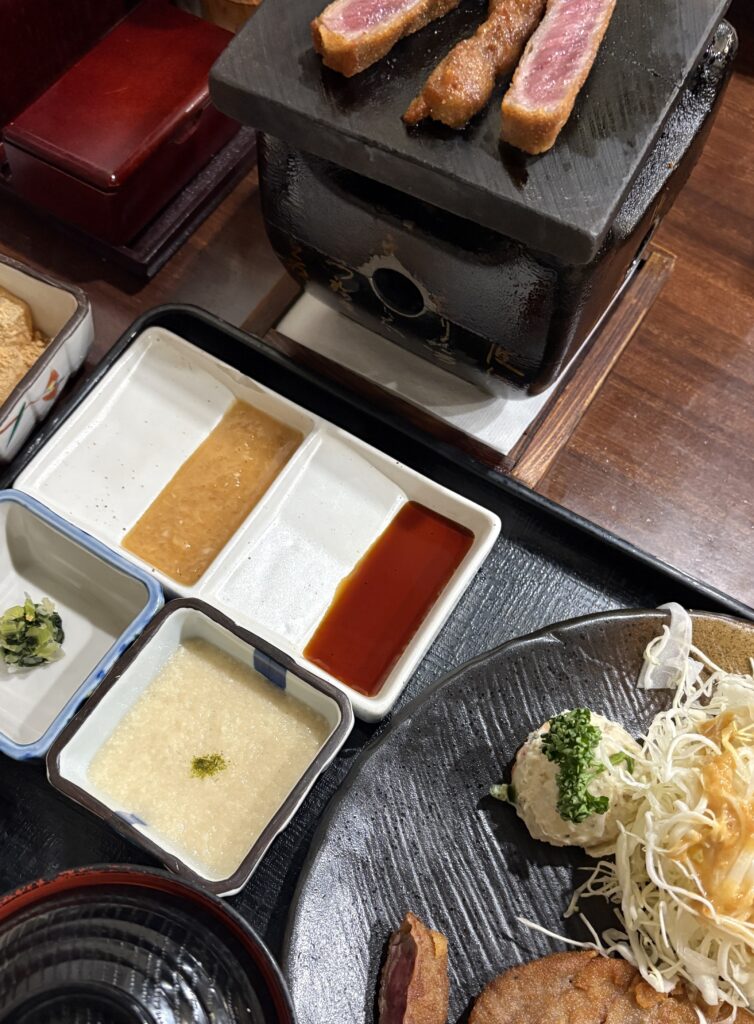
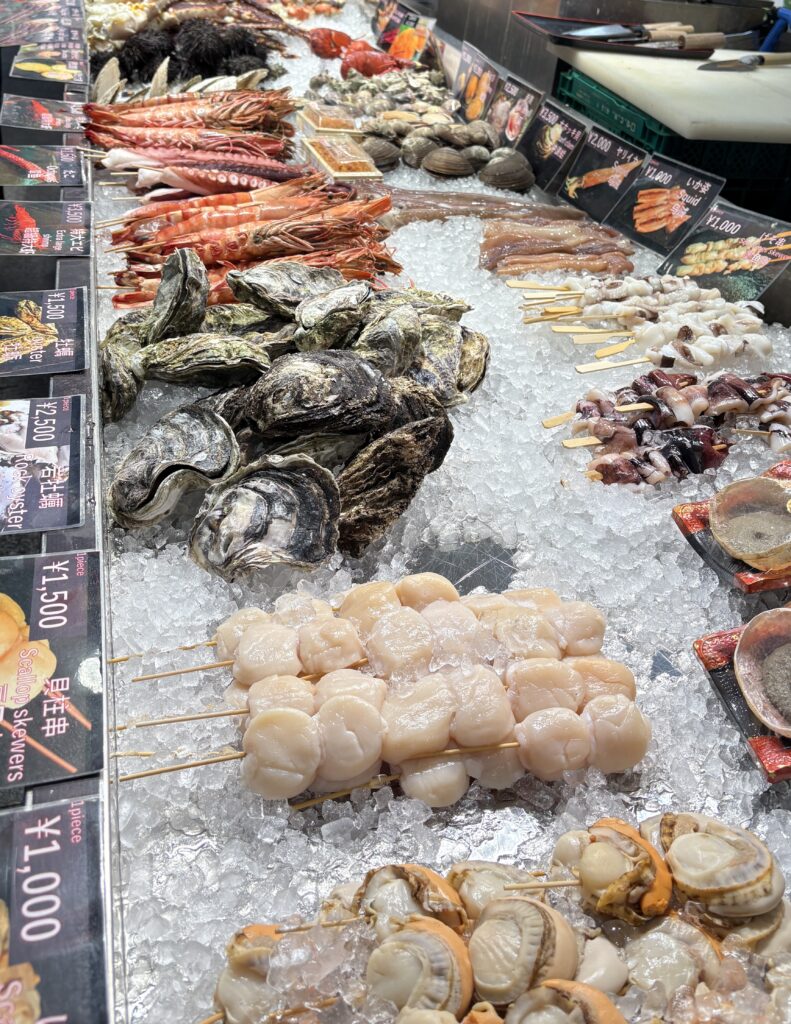
Is Osaka Worth Visiting? Here’s My Honest Take
Short answer? Yes, Osaka is absolutely worth visiting, and not just as a stop between Tokyo and Kyoto. It stands on its own, especially if you care about good food, walkable neighborhoods, and cities that don’t take themselves too seriously.
This list of the best things to do in Osaka barely scratches the surface, but it hits what makes the city special.
It’s the blend of loud and laid-back, street food and skyline views, old shrines and glowing arcades. And somehow, it all fits together.
What surprised me most wasn’t how fun Osaka is, but how comfortable it is. There’s less pressure here. Also, Osaka is more affordable than Kyoto and Tokyo. Refer to my other guide to estimate the cost of a trip to Japan.
You don’t need a perfect itinerary to enjoy it. Wander into a market. Sit by the canal. Eat something fried on a stick and call it a day.
It’s not a city that screams “look at me,” but the longer you stay, the more it pulls you in. If you’re planning a trip to Japan and wondering whether Osaka should be on your Japan itinerary, the answer is a resounding yes.
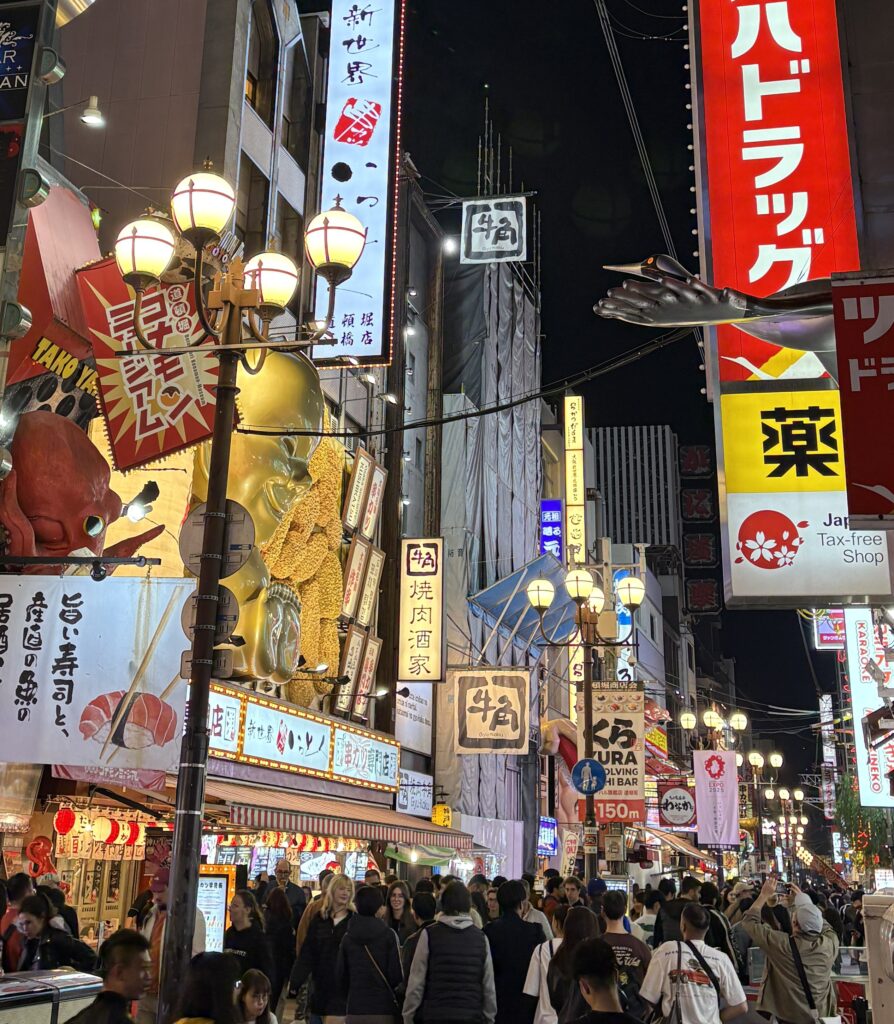
What are the best early morning things to do in Osaka?
If you’re an early riser, start with a stroll through Kuromon Ichiba Market as vendors prepare fresh seafood and snacks. It’s quieter and more local before the midday rush.
Then wander over to Nishinomaru Garden for a peaceful view of Osaka Castle with almost no crowds. It’s one of the best things to do in Osaka at sunrise.
Is it worth visiting Universal Studios Japan on a weekday?
Absolutely. Going to USJ on a weekday means significantly shorter lines, especially for Super Nintendo World and the Harry Potter area.
You’ll get more ride time and fewer crowds, which is key when you’re paying full price for a ticket.
Can you do the best things to do in Osaka without a JR Pass?
Yes, and it’s recommended. If you’re staying within Osaka City, the Osaka Metro, along with an IC card (ICOCA, Suica, etc.), covers most tourist destinations.
The JR Pass is best saved for longer trips, such as Kyoto or Hiroshima. Inside Osaka, consider skipping it and keeping your yen.
What’s the best Osaka shrine for unique photos?
Namba Yasaka Shrine, also known as the “Dragon Head Shrine,” is perfect.
Its imposing lion-head stage is dramatically photogenic, and it’s a must-visit off-the-beaten-path spot when exploring the best places to visit in Osaka beyond the typical tourist circuits.

